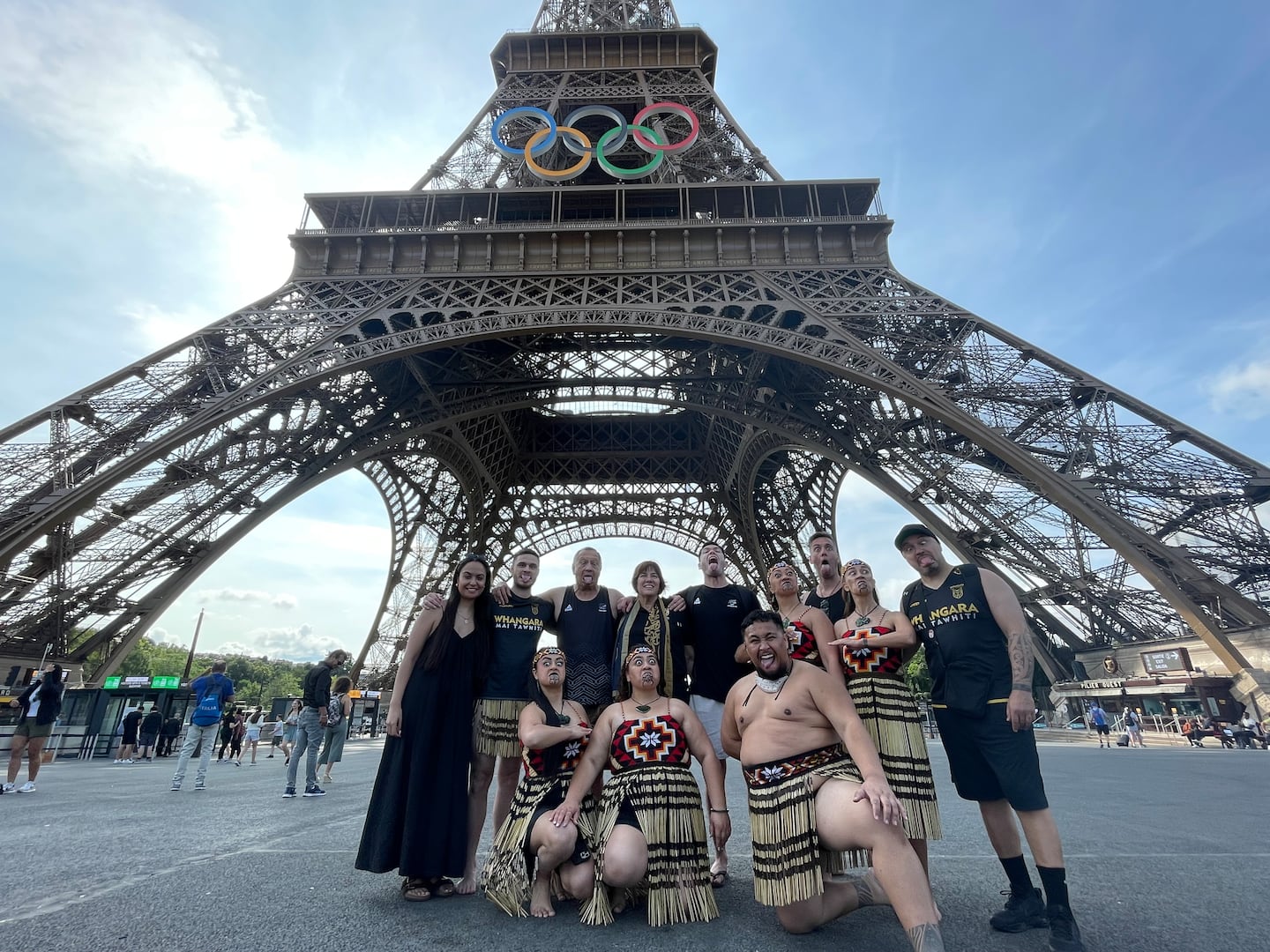In an awe-inspiring display of Māori culture, the haka group Whāngārā Mai Tawhiti captured global attention with their powerful performances at two of the world’s most iconic venues in Paris: the Olympics and the Eiffel Tower.
Following their Olympic appearance, Whāngārā Mai Tawhiti took to the grounds of the Eiffel Tower, delivering another mesmerising haka that resonated through the heart of Paris.
Sir Derek Lardelli, world-renowned artist and All Blacks haka composer, said he hopes the performance sends a message not only to the world but to New Zealand as well.
”I look back at the words of our late aunty, Ngoi Pēwhairangi, who once said this when it came to the Māori language - Whiua ki te ao. Whiua ki te rangi. Whiua ki ngā iwi katoa. Present to the world. Present to the heavens. Present to the nation!
“Thus, here we are, [as Whāngārā Mai Tawhiti] presenting Māori purpose and aspirations to the world, proving Māori can make their mark in the world.”
Tourists and locals alike gathered to witness their performance. It was a display that Lardelli said showed the standard of competitive and athletic aspects of haka, especially after recognising that it is France which has held the world record for the biggest haka performance since 2014.
“I was astonished to hear as news of this travelled to my ears. Therefore, if they wish to compete against some of the best for haka, bring it! Like the Olympics, we are here to reclaim a prize.”
In bringing the haka to the Olympics, Whāngārā Mai Tawhiti not only entertained but also educated the world on the point of difference that New Zealand has compared to the rest of the competing countries.
Lardelli said despite the challenges faced in merely performing under the Eiffel Tower, today’s performance captivated the masses and served as a reminder of the strength and resilience of indigenous communities across the globe.
“We are the indigenous people of New Zealand who are responsible in carrying the sanctity of not only our New Zealand athletes and Māori King, but of Aotearoa as well.
“From our sacred mountains, rivers and villages, it is because of them we are able to educate a deeper appreciation for Māori culture and the rich tapestry of global traditions.”

